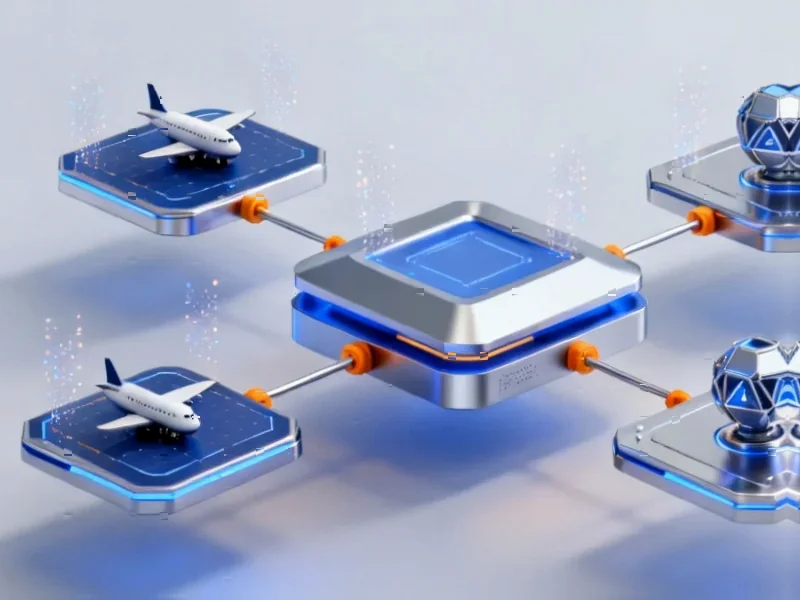According to ExtremeTech, a comprehensive review published in the journal Nature reveals that scientists are making significant progress toward developing advanced olfactory sensing technology that could match or exceed human smell capabilities. The research indicates that neuromorphic architecture represents the most promising path forward for creating practical “e-nose” technology, with humans capable of intuitively identifying approximately one trillion different smells at incredibly low concentrations. Recent developments include a Korean team demonstrating a working olfactory neuron model earlier this year, specifically mentioning growing demand for gas sensors on mobile devices. The technology could revolutionize applications ranging from medical diagnosis and food safety monitoring to emotional communication and hazardous environment detection. This breakthrough suggests we may be closer than ever to practical smell-sensing technology.
The Neuromorphic Advantage
What makes neuromorphic computing uniquely suited for olfactory applications is its biological inspiration. Traditional computing architectures struggle with pattern recognition tasks that the human brain handles effortlessly. Neuromorphic systems mimic the brain’s neural networks, allowing them to process complex sensory inputs in ways that conventional computers cannot. For smell detection, this means creating systems where individual sensors work collectively rather than in isolation, much like the 400 different types of olfactory receptors in the human nose. The pattern of activation across multiple sensors creates a unique signature for each odor, enabling identification of complex scent profiles that would be impossible for single-purpose chemical sensors.
Overcoming Technical Hurdles
The path to practical e-nose technology faces several significant technical challenges. Sensor sensitivity remains a major obstacle – human olfactory receptors can detect certain compounds at concentrations as low as one part per trillion. Current electronic sensors struggle to achieve this level of sensitivity while maintaining selectivity across diverse chemical environments. Power consumption represents another critical challenge, as the human nose operates on minimal energy compared to electronic alternatives. Recent research into biohybrid materials shows promise for addressing these limitations by combining biological components with electronic systems, potentially creating sensors that leverage the natural sensitivity of biological receptors while benefiting from electronic signal processing.
Transformative Medical Applications
The medical implications of advanced olfactory technology could be revolutionary. Many diseases produce distinctive volatile organic compounds that serve as chemical biomarkers. Diabetes can produce acetone-like breath, liver failure creates a musty odor, and certain infections generate specific chemical signatures. Research combining human olfactory receptors with artificial intelligence could lead to non-invasive diagnostic tools that detect diseases earlier than current methods. Imagine a smartphone accessory that screens for multiple conditions through breath analysis, or hospital monitoring systems that detect infection markers before symptoms become apparent. The potential for early disease detection and continuous health monitoring represents one of the most compelling applications for this technology.
Industrial and Safety Applications
Beyond medical uses, advanced olfactory sensors could transform industrial safety and environmental monitoring. Current gas detection systems are typically limited to specific known hazards, but a generalized e-nose could identify unexpected chemical threats in real-time. Manufacturing facilities could monitor for process deviations, food processing plants could detect spoilage before visible signs appear, and environmental agencies could track pollution sources with unprecedented precision. The ability to operate in hazardous environments where human exposure would be dangerous makes these systems particularly valuable for chemical plants, mining operations, and disaster response scenarios. Unlike human senses, electronic systems can be calibrated to detect threats at safe exposure levels and provide quantitative data for regulatory compliance.
The Path to Commercialization
While the scientific foundation appears solid, significant engineering challenges remain before consumer applications become practical. Miniaturization, power management, and calibration stability represent key hurdles for mobile implementations. Early commercial applications will likely appear in specialized industrial and medical equipment before trickling down to consumer devices. The integration with existing mobile platforms and IoT ecosystems will be crucial for widespread adoption. As with many emerging technologies, we can expect initial applications to focus on high-value professional use cases before consumer applications become economically viable. The timeline for practical consumer e-nose technology likely spans several years, but the foundational research suggests this revolution in sensory technology is inevitable rather than speculative.




